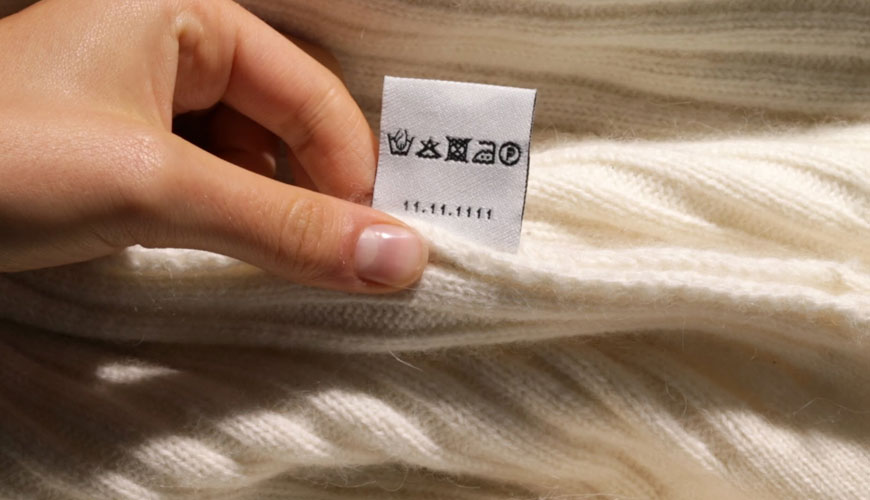

EUROLAB laboratory provides testing and compliance services within the scope of AATCC 96 standard. The AATCC 96 standard is used to determine dimensional changes in woven and knitted fabrics made from fibers other than wool when subjected to washing procedures commonly used in a commercial laundromat. These tests are not expedited and must be repeated after multiple washes to determine dimensional changes.

A range of laundering test procedures, from severe to mild, are provided to simulate the various types of commercial laundering available. Five drying test procedures were established to cover the drying techniques used.
The dimensional change of woven and knit fabric samples subjected to the washing, drying and restoration procedures specific to commercial laundry is determined by measuring the changes in the comparison distances applied to the fabric before washing.
Three pieces of each sample should be tested. Whenever possible, each sample should contain different batches of longitudinal and transverse threads. Fabrics that deteriorate heavily in the unwashed state can give misleading size change results when washed with any procedure. It is therefore recommended that the results be considered indicative only if the sample is not taken or used from such areas.
The size and preparation of test specimens will vary depending on the type of fabric being tested. For woven and warp knit fabrics at least 60 cm wide: Preferably, cut three test samples of 60 × 60 cm. Mark each sample with three double row marks of 46 cm parallel to the length of the fabric and three double row marks of 46 cm parallel to the width of the fabric. Each benchmark should be at least 8 cm from all edges of the test specimens. Two row marks in the same direction should be about 15 cm apart from each other.
Alternatively, if sample size is limited, cut three 40 × 40 cm test samples. If using this size, mark each sample with three 25 cm double row marks parallel to the length of the fabric and three double row marks 25 cm parallel to the width of the fabric. Each benchmark should be at least 5 cm from all edges of the test specimens. Two row marks in the same direction should be about 12 cm apart from each other.
For woven and warp knit fabrics less than 60 cm wide: Cut three test samples, each 60 cm long and the full width of the fabric. Mark each test sample with 46 cm bench marks parallel to the length of the fabric. Row marks should be at least 12 cm and at least 5 cm from the fabric edges. For the width direction, select the measurement mark distances from the edges to 5 cm. Place three such comparison marks on each test sample in the width direction. Row marks in the width direction should be at least 15 cm and at least 8 cm from the top and bottom edges of the fabric.
Examples of tubular finished knitted fabrics representing tubular wares; i.e. underwear, tracksuits, polo shirts etc. tube should be tested. Cut three specimens, each 60 cm long. Tubular finished knitted fabrics representing goods used in the open-width state; ie dresses, trousers, suits, etc. should be split and worked straight. For fabrics with movement or ladders, it is recommended to sew the edges with the 505 stitch type.
Our organization, EUROLAB, provides test method services for dimensional changes in commercial laundering of woven and knitted fabrics, excluding wool, within the framework of national and international standards, with its trained and expert staff and advanced technological equipment, among numerous test, measurement, analysis and evaluation studies. Contact EUROLAB to get testing service under the AATCC 96 standard.
To get an appointment, to get more detailed information or to request an evaluation, you can ask us to fill in our form and reach you.